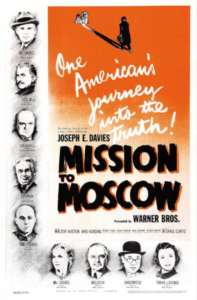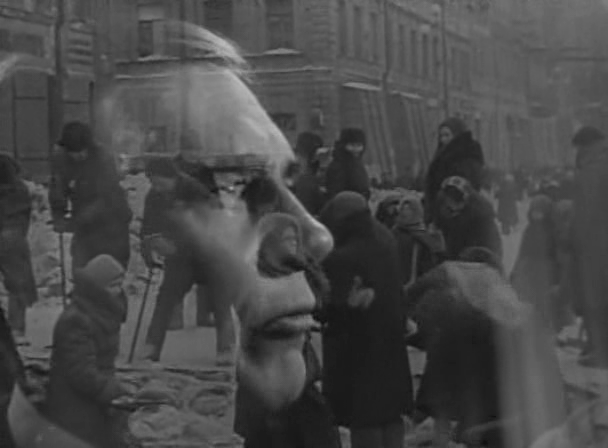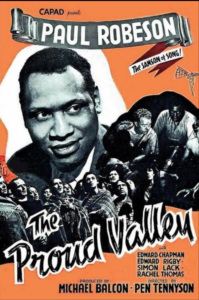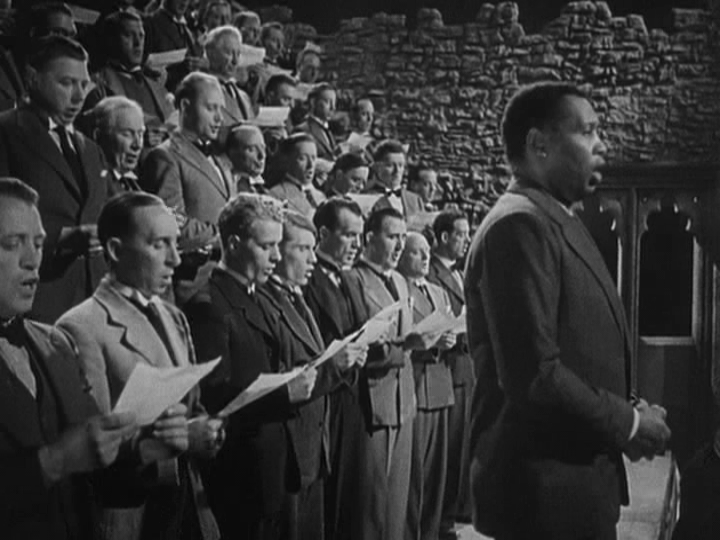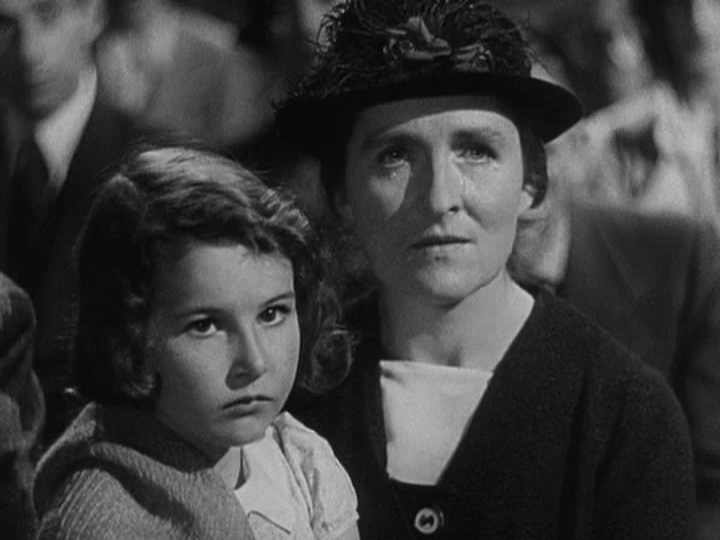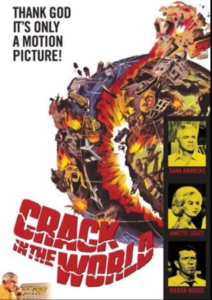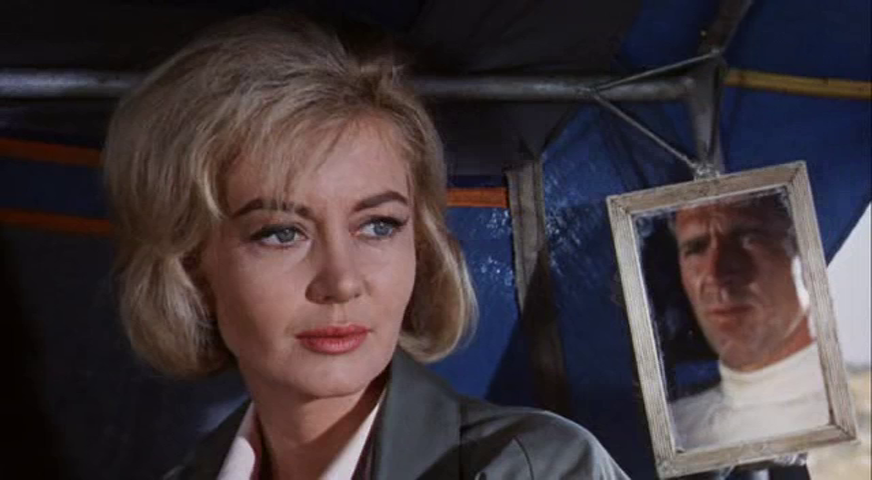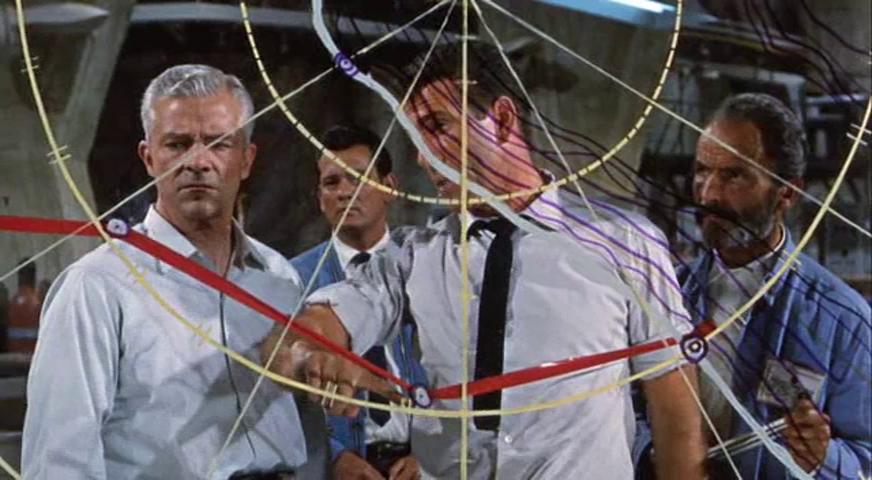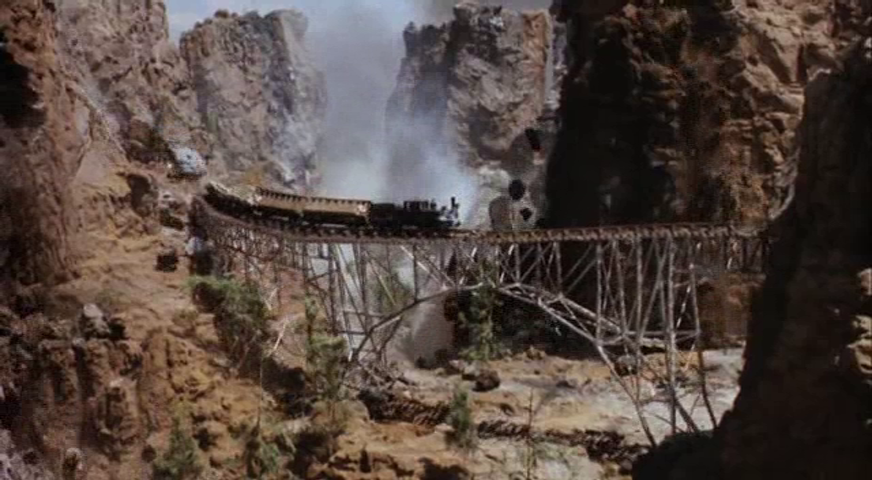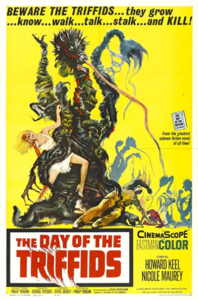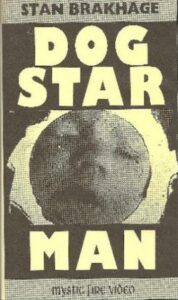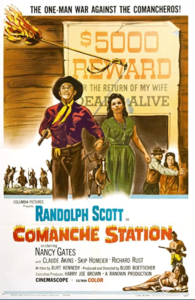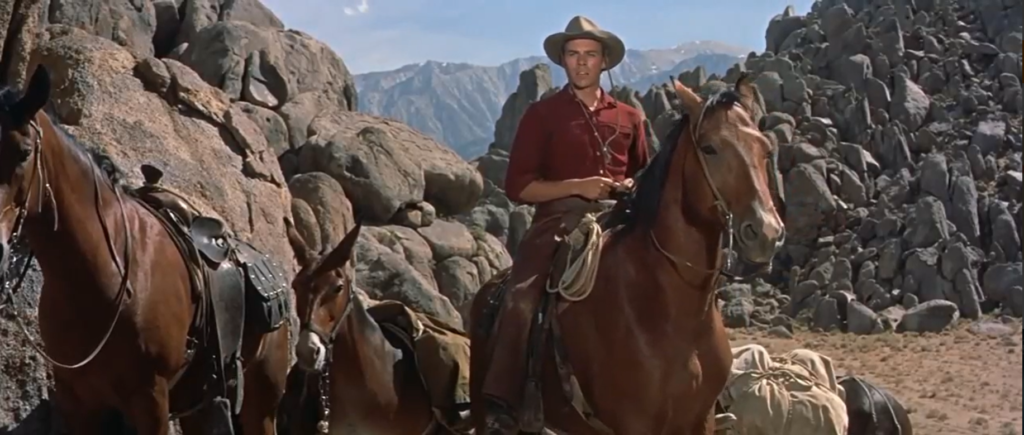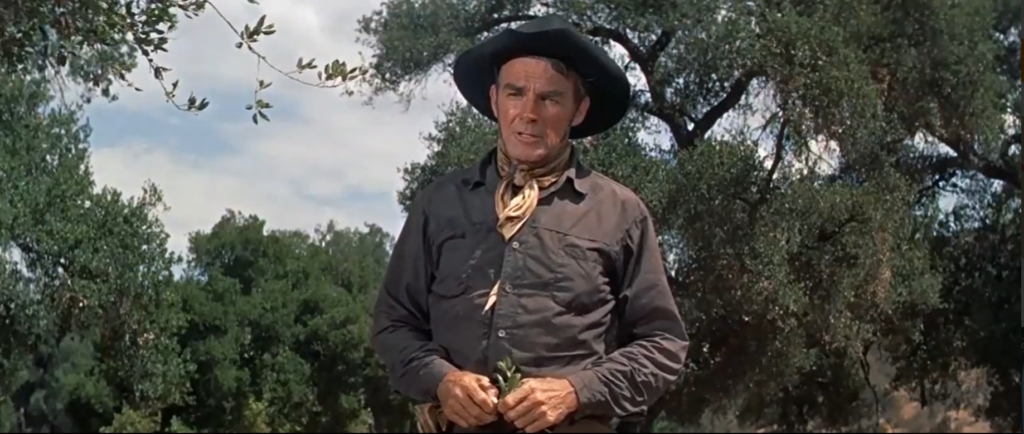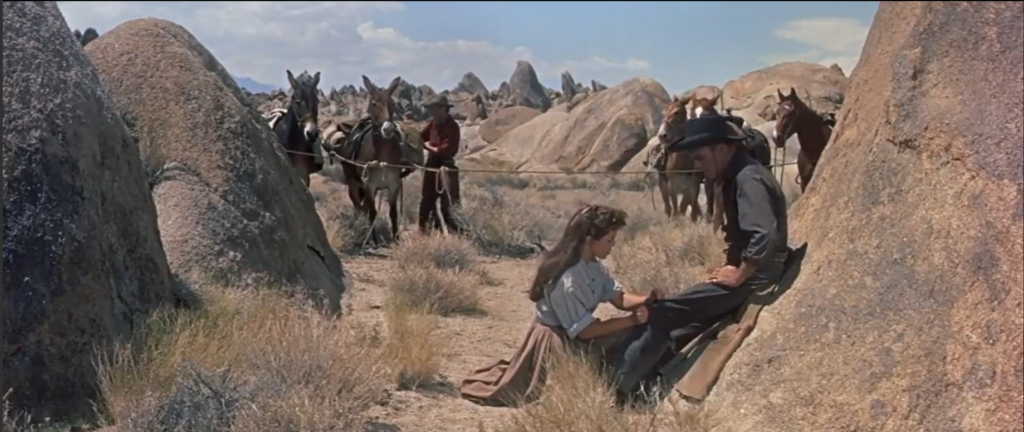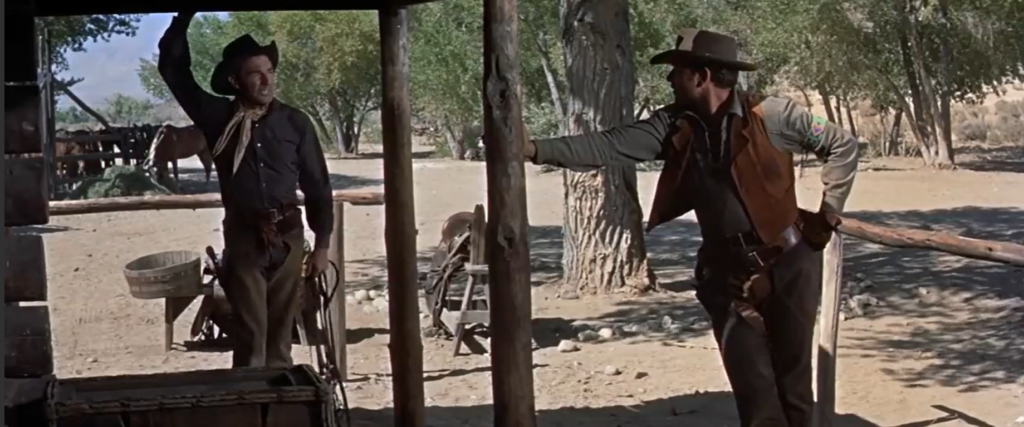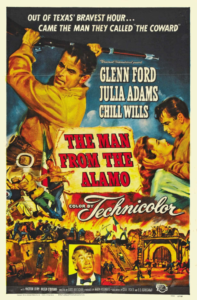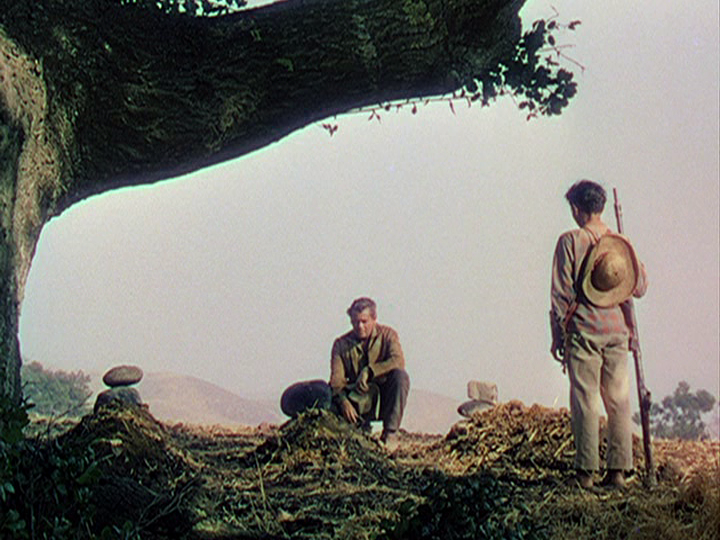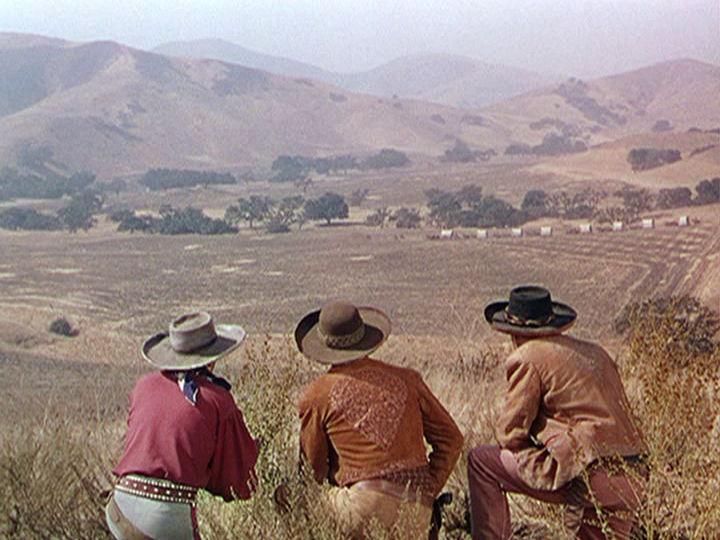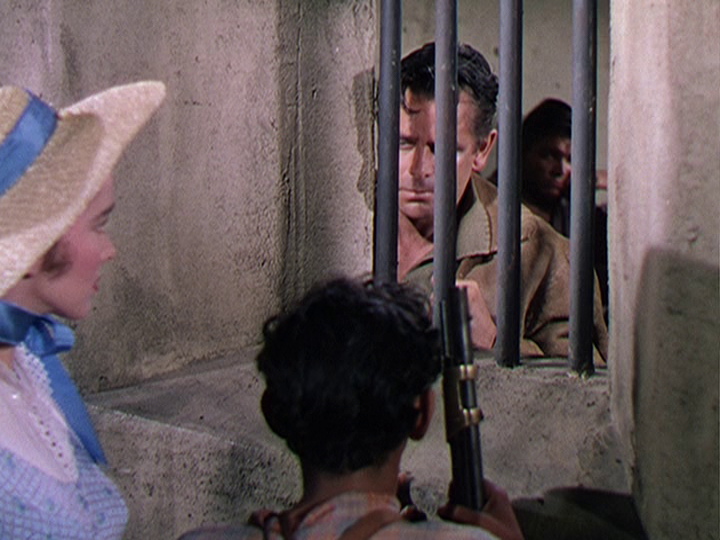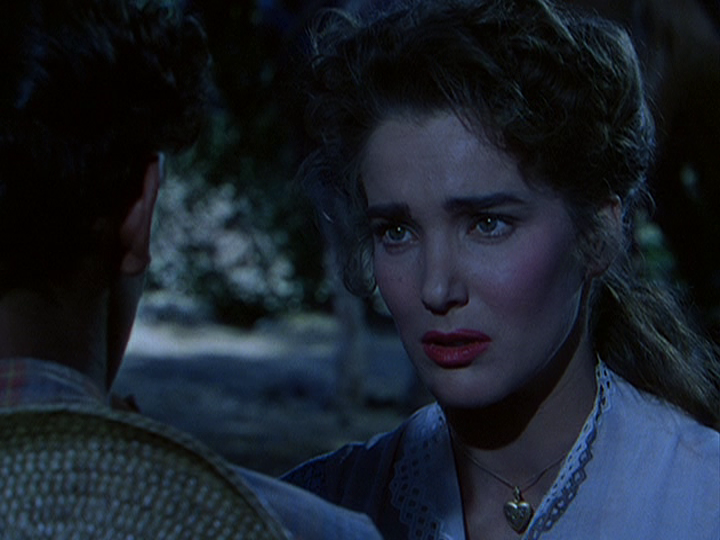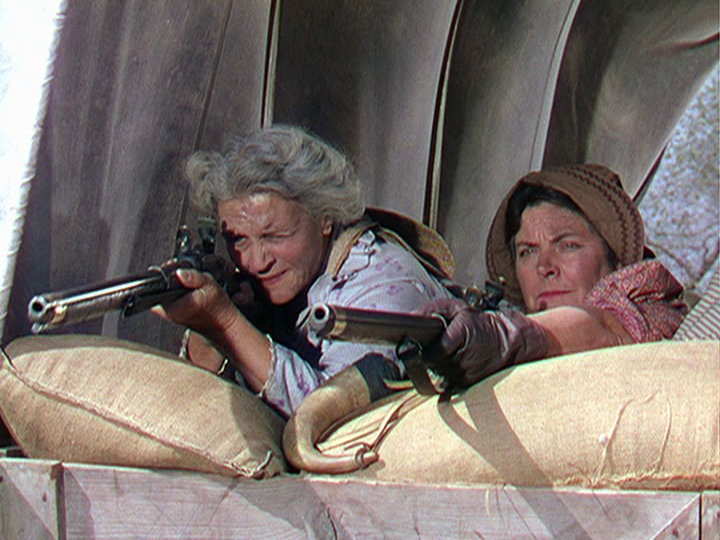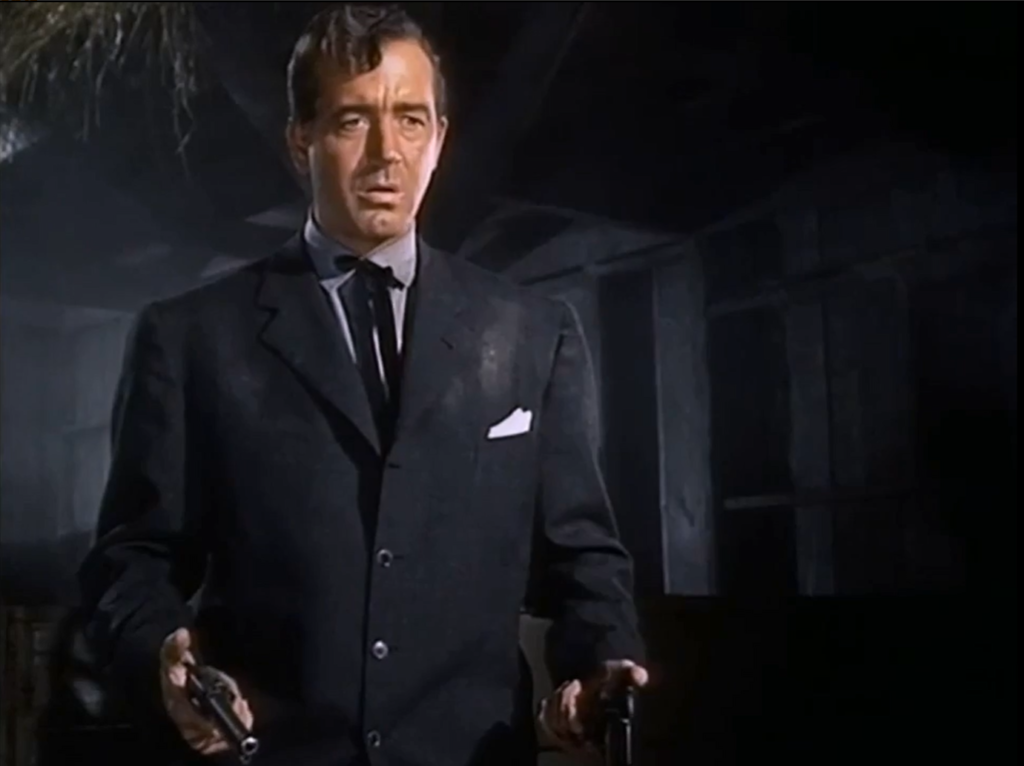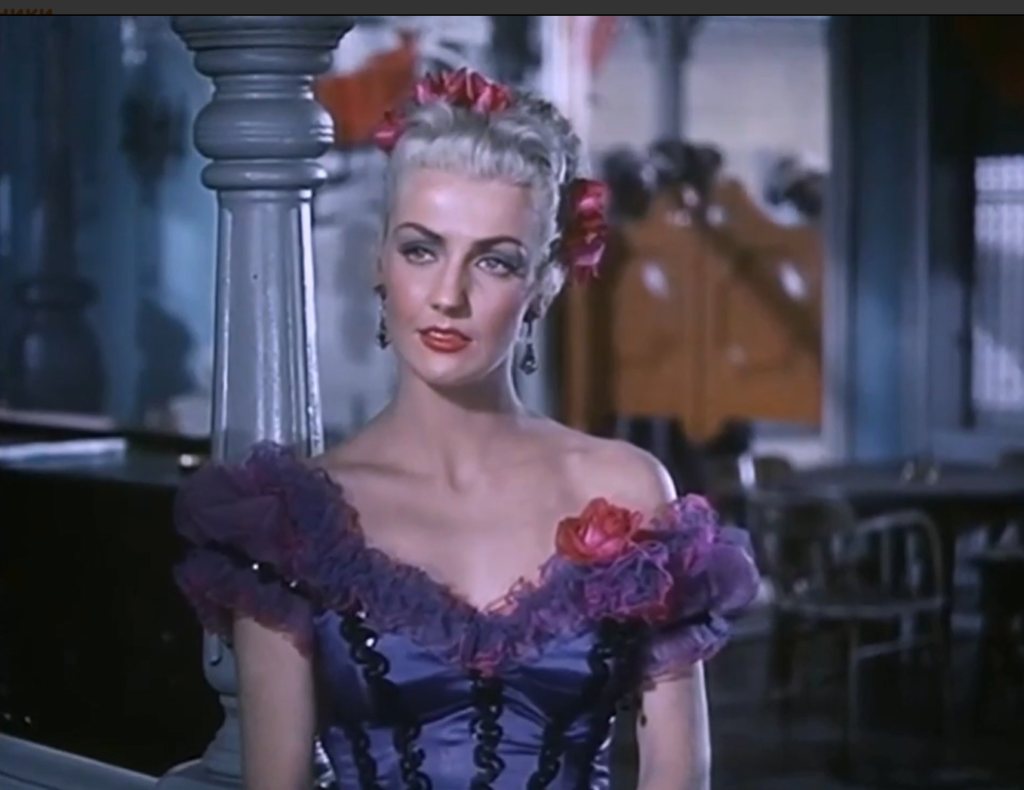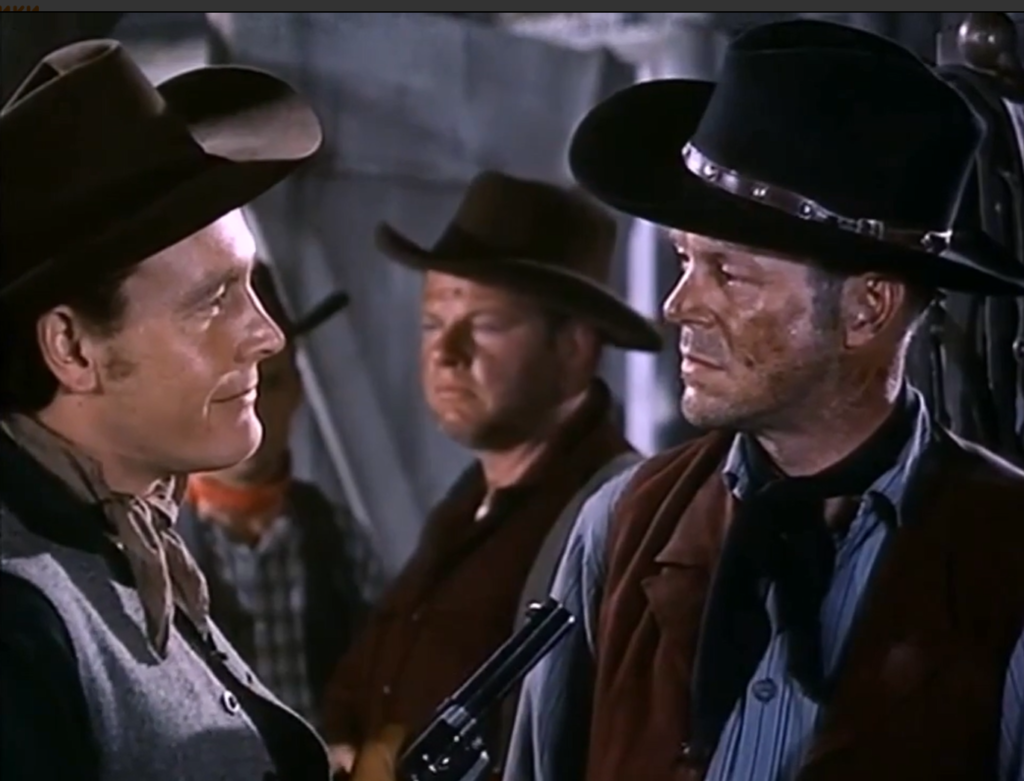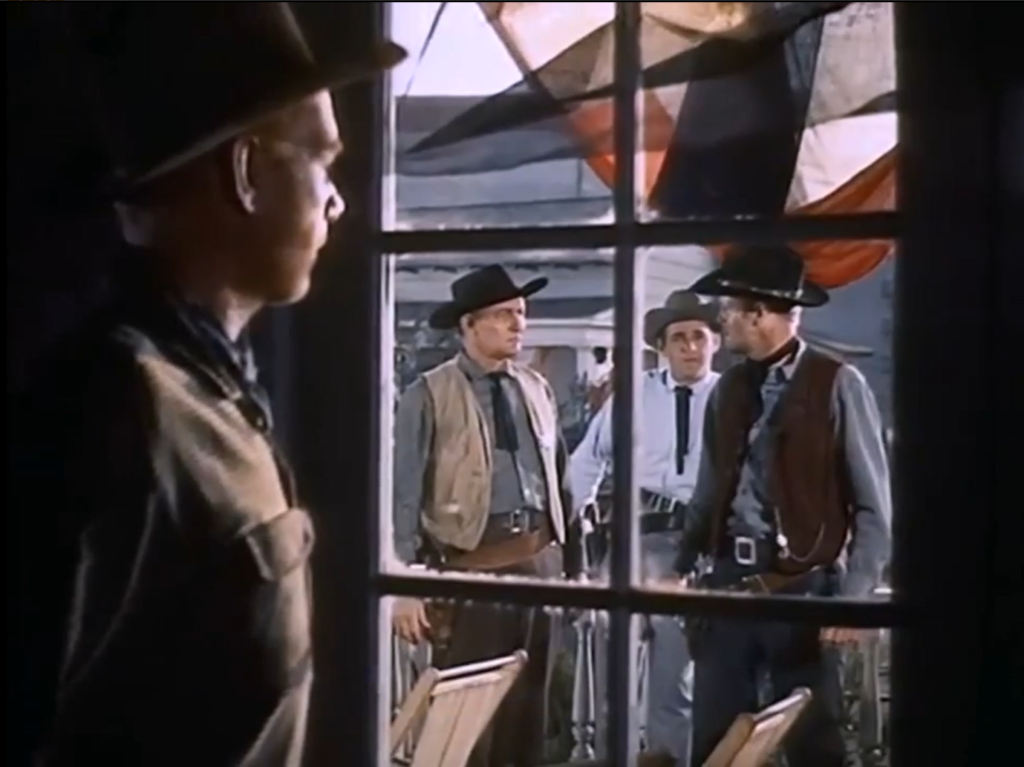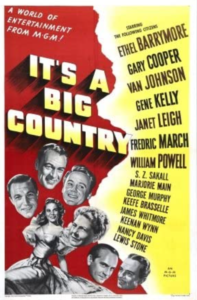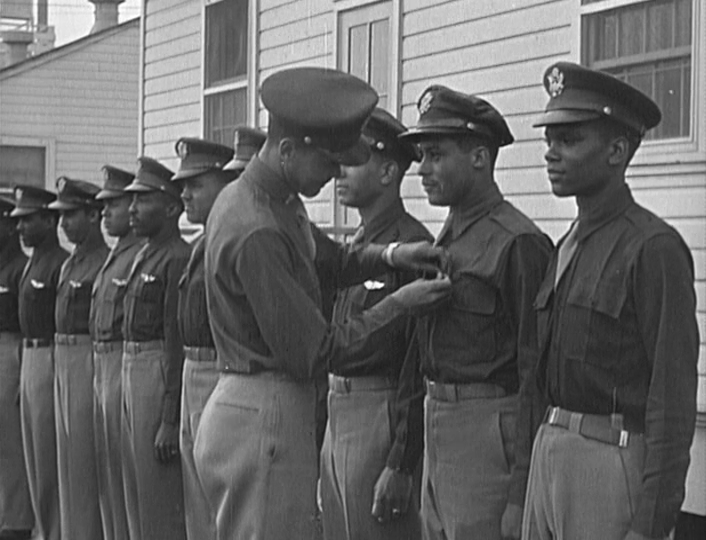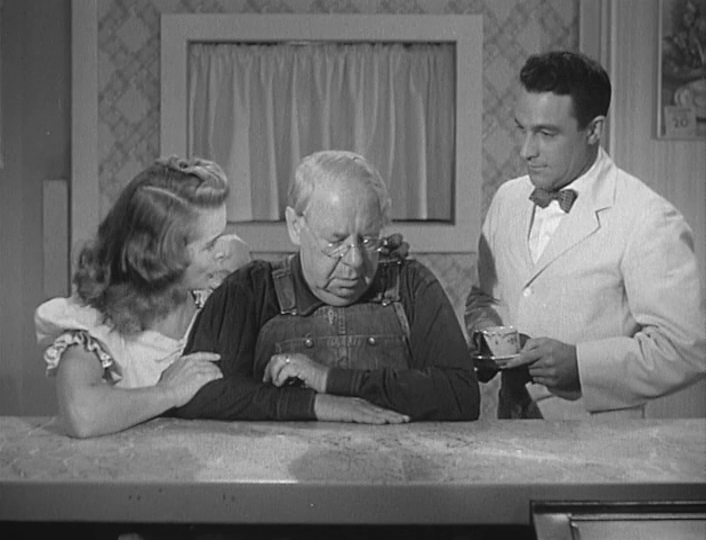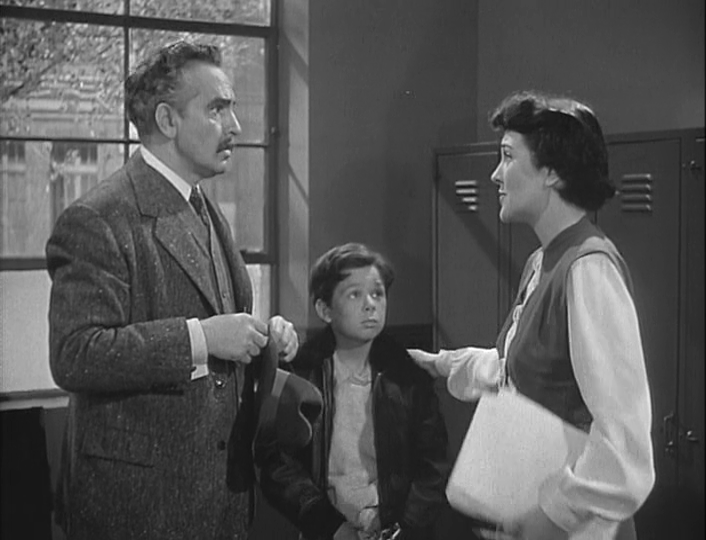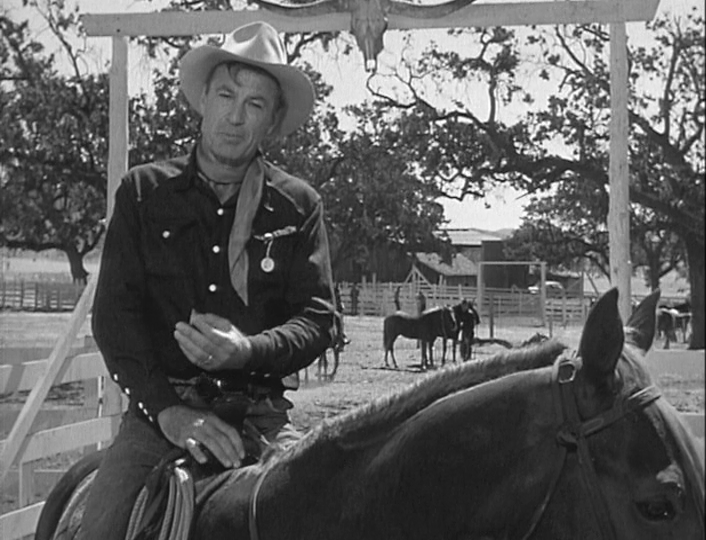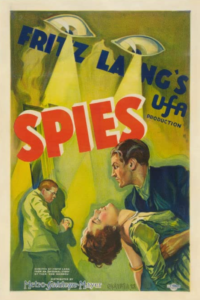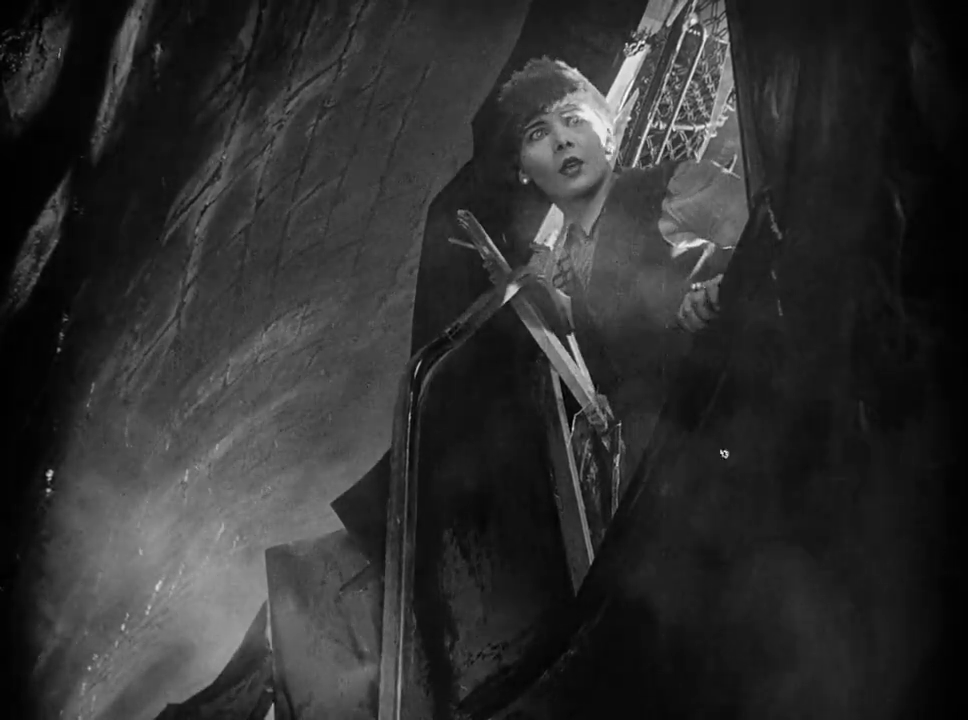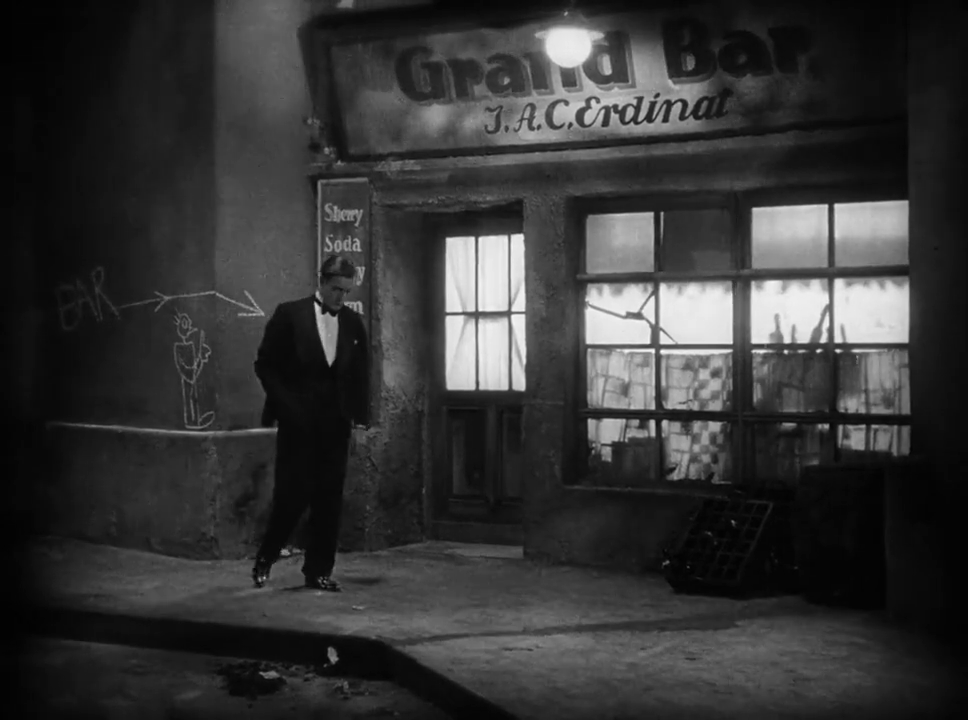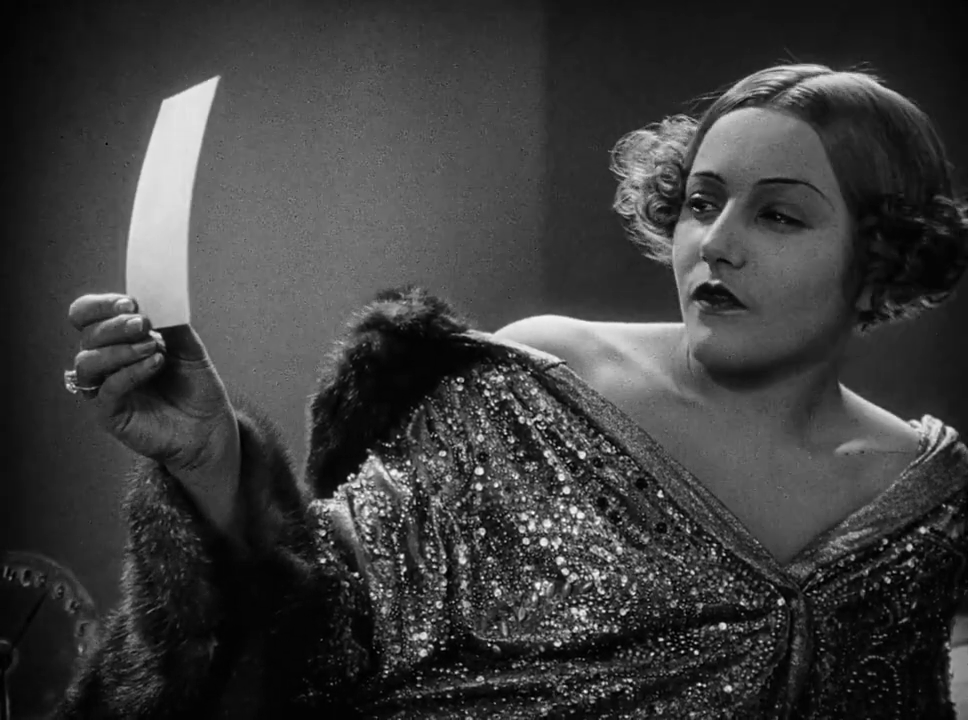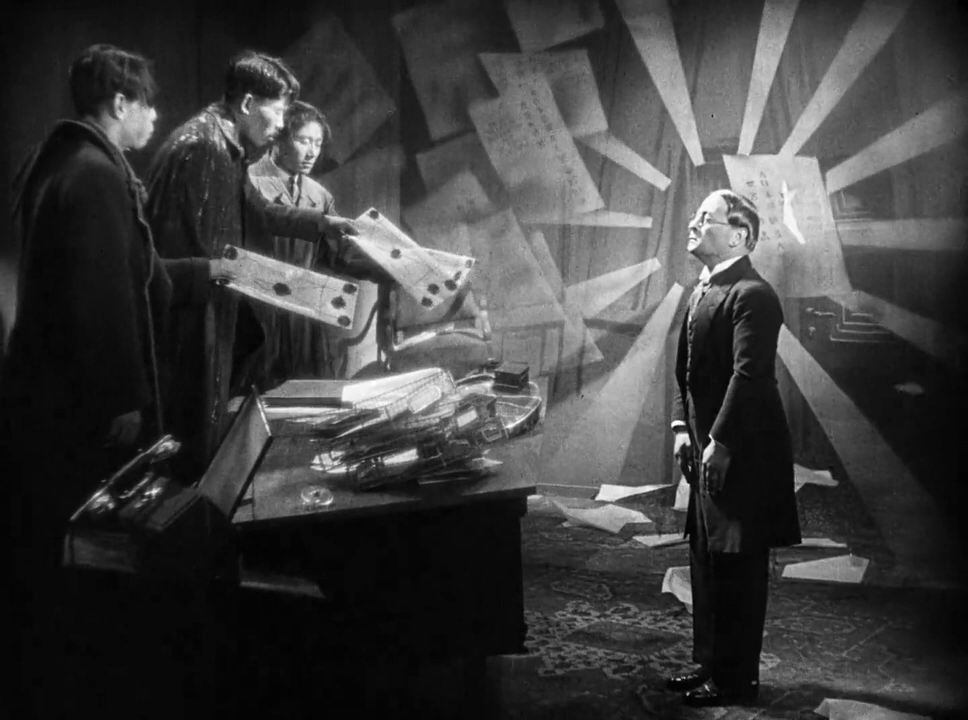|
Genres, Themes, Actors, and Directors:
- Blindness
- Horror Films
- Howard Keel Films
- Killer Plants
- Post-Apocalypse
- Science Fiction
- Survival
Response to Peary’s Review:
Peary writes that this “enjoyable sci-fi” flick — based on an “exciting, thoughtful novel” by John Wyndham — is “kept from being a classic… because the triffids are foolish-looking and actually get in the way of what would have been a far more interesting storyline: how the world’s survivors cope with the end of civilization” (which is “the part of the story that was emphasized in the 1981 British TV movie”). I agree with Peary’s short review, which doesn’t provide much more than basics of the plot, and also mentions that “Freddie Francis directed the Moore-Scott scenes a year after [listed director Steve] Sekeley completed his work.” The idea of the entire world (minus a few survivors) being blinded is creepy enough that we certainly don’t need the primary plot of killer plants — which are laughably non-menacing.
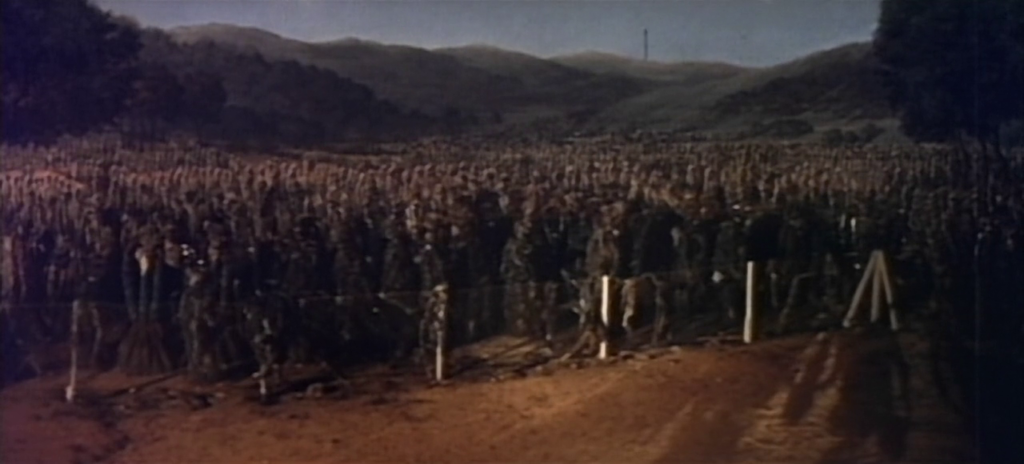
The best scenes show the fallout of the meteorite-induced blindness — such as the after-effects of Keel chatting with his eye surgeon:

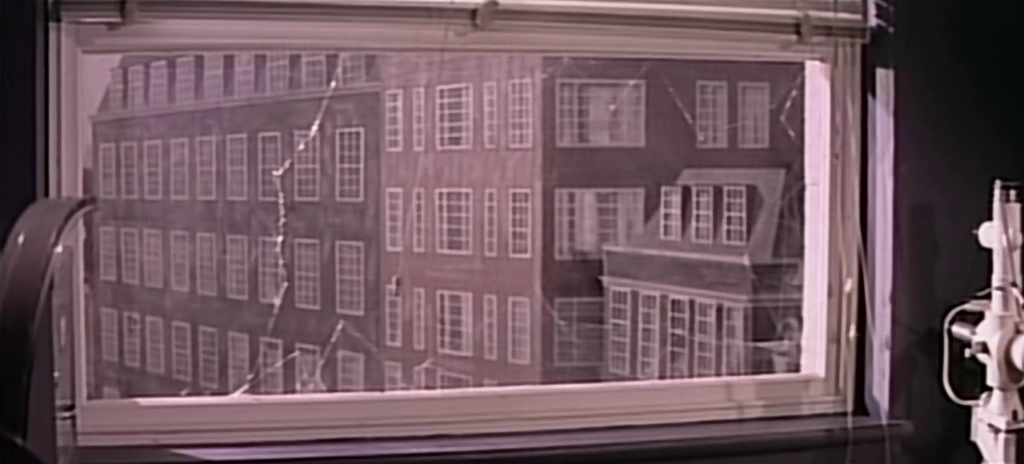
… the chaos of blind passengers emerging from a crashed train:
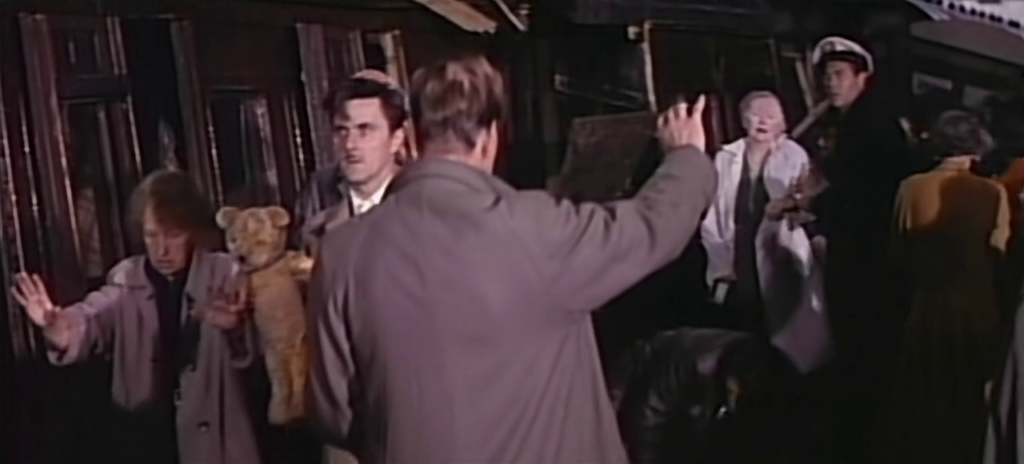
… and a plane crew’s attempt to keep passengers calm while they request help to land their doomed aircraft:
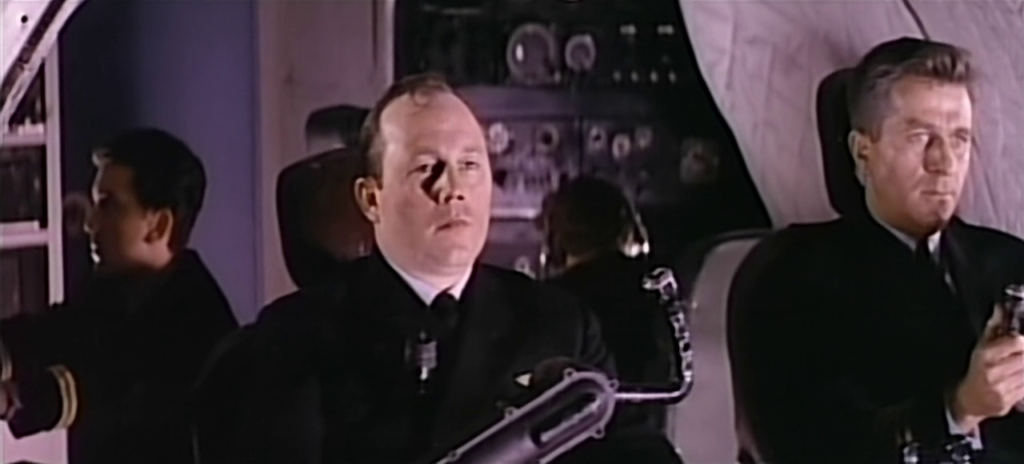
Unfortunately, nearly everything else about the film is poorly written, with the subplot about quibbling Scott and Moore (a mean alcoholic) especially jarring — though Scott does provide the film’s best scream-shots:
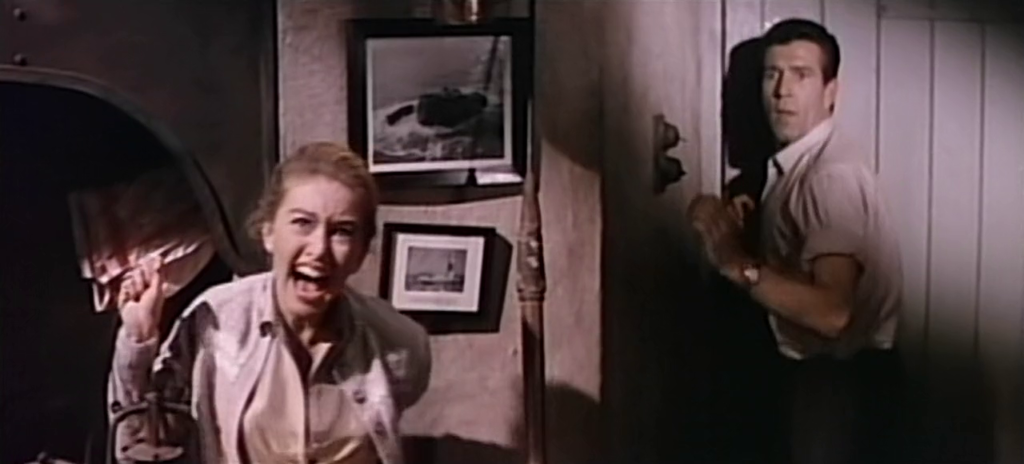
There’s also something inherently compelling about watching motley survivors banding together to figure out their next steps:
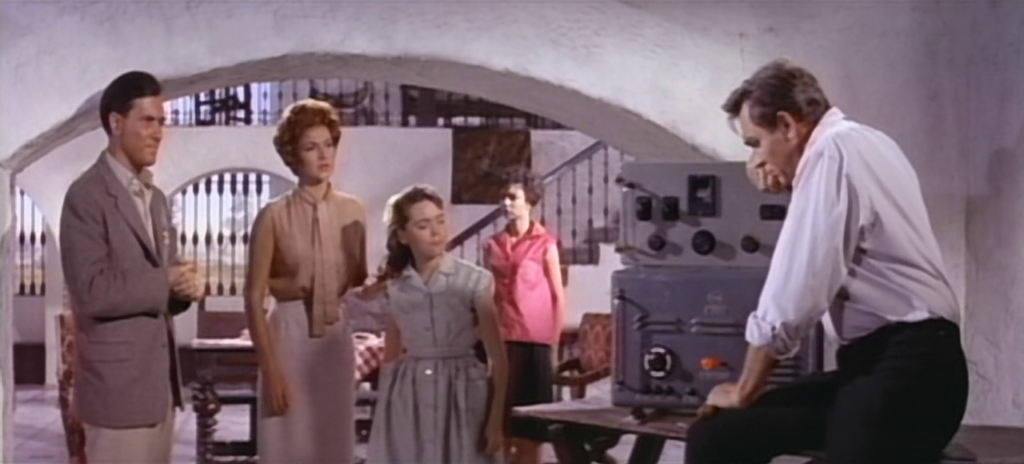
However, this film isn’t must-see except for those curious about its cult status.
Note: Click here to watch Janette Scott reminiscing about her experience making the portion of the film she appeared in — which includes a surprising anecdote about Oliver Reed!
Redeeming Qualities and Moments:
- Some creepy post-apocalyptic imagery
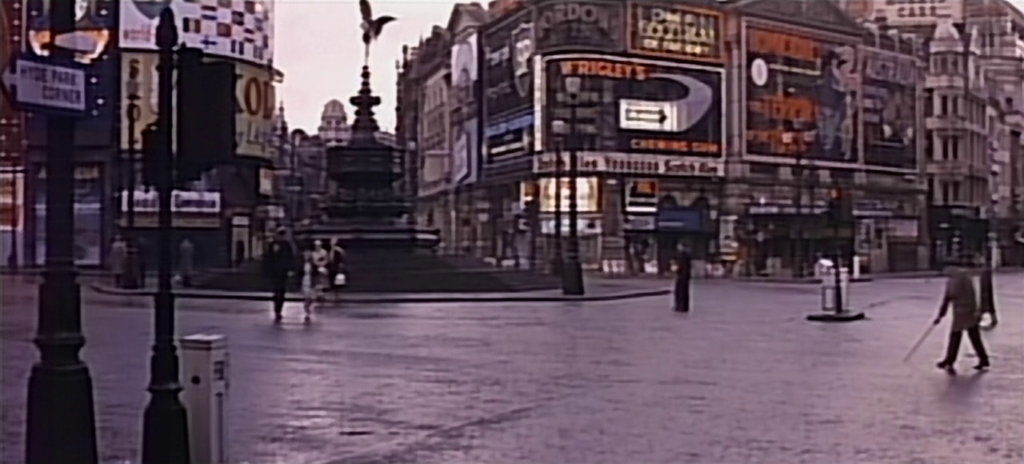
Must See?
No, but it’s worth a one-time look.
Links:
|
